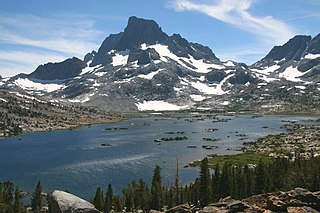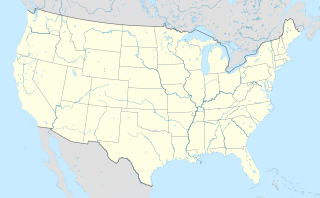 W
WThe National Wilderness Preservation System (NWPS) of the United States protects federally managed wilderness areas designated for preservation in their natural condition. Activity on formally designated wilderness areas is coordinated by the National Wilderness Preservation System. Wilderness areas are managed by four federal land management agencies: the National Park Service, the U.S. Forest Service, the U.S. Fish and Wildlife Service, and the Bureau of Land Management. The term "wilderness" is defined as "an area where the earth and community of life are untrammeled by man, where man himself is a visitor who does not remain" and "an area of undeveloped Federal land retaining its primeval character and influence, without permanent improvements or human habitation, which is protected and managed so as to preserve its natural conditions." As of 2016, there are 803 designated wilderness areas, totaling 111,368,221 acres (45,069,120 ha), or about 4.5% of the area of the United States.
 W
WThe BWCA Wilderness Act of 1978 created the Boundary Waters Canoe Area Wilderness, which was previously known as the Boundary Waters Canoe Area. The bill was introduced in October 1975 by United States Congressman Jim Oberstar and was a source of major controversy and debate. Topics of major concern were logging, mining, the use of snowmobiles and motorboats. After much debate, the Act was signed into law by President Jimmy Carter on October 21, 1978.
 W
WThe Eastern Wilderness Areas Act was signed into law by President Gerald Ford on January 3, 1975. The Act designated 16 new wilderness areas in the Eastern United States, including 207,000 acres (84,000 ha) of wilderness on national lands in 13 states. Although it was originally untitled, the bill signed by Ford has come to be known as the Eastern Wilderness Areas Act.
 W
WThe New England Wilderness Act of 2006 was signed into law by President George W. Bush on December 1, 2006. The Act designated three (3) new wilderness areas in the U.S. states of New Hampshire and Vermont, while expanding five (5) existing wilderness areas across these two states. A total of 76,152 acres (30,818 ha) of new wilderness were created, in the White Mountain National Forest and the Green Mountain National Forest. The Act also created a new recreation area in Vermont.
 W
WThe Vermont Wilderness Act of 1984 was signed into law by President Ronald Reagan on June 19, 1984. The Act designated four (4) new wilderness areas in the U.S. state of Vermont, while expanding one (1) existing wilderness area. A total of 41,260 acres (16,700 ha) of new wilderness were created, all in the Green Mountain National Forest. The Act also created a new recreation area in Vermont.
 W
WThe Wilderness Act of 1964 was written by Howard Zahniser of The Wilderness Society. It created the legal definition of wilderness in the United States, and protected 9.1 million acres (37,000 km²) of federal land. The result of a long effort to protect federal wilderness and to create a formal mechanism for designating wilderness, the Wilderness Act was signed into law by President Lyndon B. Johnson on September 3, 1964 after over sixty drafts and eight years of work.
 W
WEl Toro Wilderness is a 10,000-acre (40.5 km2) National Wilderness Preservation System unit located partly within El Yunque National Forest on the island of Puerto Rico. El Toro, named after the highest peak in the forest at 3,524 feet (1,074 m), is the only tropical wilderness in the United States National Forest System. It was created in 2005 by the Caribbean National Forest Act of 2005.
 W
WKisatchie Hills Wilderness is a 8,701-acre (3,521 ha) designated wilderness area in the U.S. state of Louisiana. Contained within Kisatchie National Forest, the wilderness is managed by the U.S. Forest Service. In addition to a variety of wildlife, the area features terrain that is unusually rugged for Louisiana. Undeveloped except for its trail system, the area may be accessed only by foot or on horseback.
 W
WNew Mexico Wilderness Act of 1980, Public Law 96-550, is a U.S. federal law that authorized the establishment of a number of designated Wilderness Areas on National Forest land in New Mexico. The law also added additional lands to four existing Wilderness Areas in New Mexico, and named several Forest areas for study as potential Wilderness Areas. The law also created two new National Park Service units, Chaco Culture National Historical Park and Salinas National Monument, from existing NPS lands. By means of this law approximately 400,000 acres of forest land were designated as Wilderness Areas, as described by the Wilderness Act of 1964, and approximately 75,000 additional acres were designated as Wilderness Study Areas for possible future inclusion in the Wilderness program.